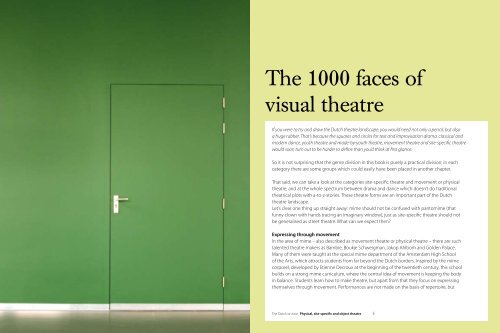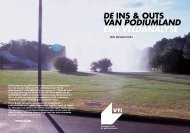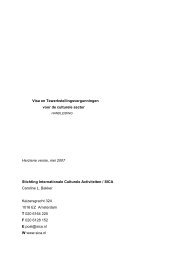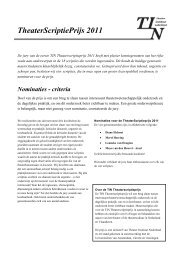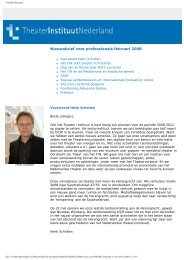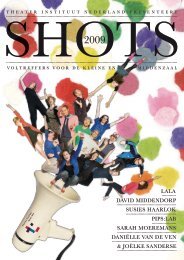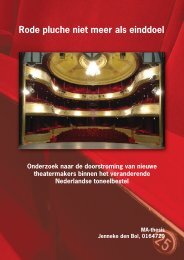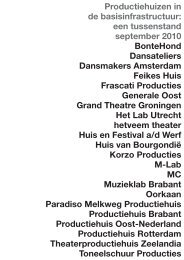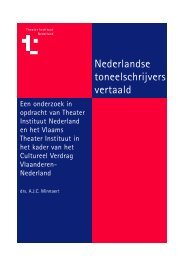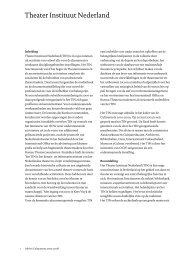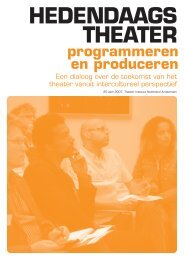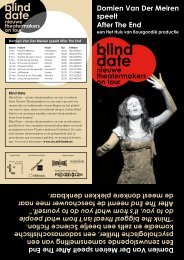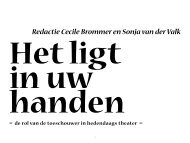T H E D U T C H O N T O U R - Theater Instituut Nederland
T H E D U T C H O N T O U R - Theater Instituut Nederland
T H E D U T C H O N T O U R - Theater Instituut Nederland
You also want an ePaper? Increase the reach of your titles
YUMPU automatically turns print PDFs into web optimized ePapers that Google loves.
The 1000 faces of<br />
visual theatre<br />
If you were to try and draw the Dutch theatre landscape, you would need not only a pencil, but also<br />
a huge rubber. That’s because the squares and circles for text and improvisation drama, classical and<br />
modern dance, youth theatre and made-by-youth theatre, movement theatre and site-specific theatre<br />
would soon turn out to be harder to define than you’d think at first glance.<br />
So it is not surprising that the genre division in this book is purely a practical division; in each<br />
category there are some groups which could easily have been placed in another chapter.<br />
That said, we can take a look at the categories site-specific theatre and movement or physical<br />
theatre, and at the whole spectrum between drama and dance which doesn’t do traditional<br />
theatrical plots with a-to-z-stories. These theatre forms are an important part of the Dutch<br />
theatre landscape.<br />
Let’s clear one thing up straight away: mime should not be confused with pantomime (that<br />
funny clown with hands tracing an imaginary window), just as site-specific theatre should not<br />
be generalised as street theatre. What can we expect then?<br />
Expressing through movement<br />
In the area of mime – also described as movement theatre or physical theatre – there are such<br />
talented theatre makers as Bambie, Boukje Schweigman, Jakop Ahlbom and Golden Palace.<br />
Many of them were taught at the special mime department of the Amsterdam High School<br />
of the Arts, which attracts students from far beyond the Dutch borders. Inspired by the mime<br />
corporel, developed by Etienne Decroux at the beginning of the twentieth century, this school<br />
builds on a strong mime curriculum, where the central idea of movement is keeping the body<br />
in balance. Students learn how to make theatre, but apart from that they focus on expressing<br />
themselves through movement. Performances are not made on the basis of repertoire, but<br />
The Dutch on tour Physical, site-specific and object theatre


